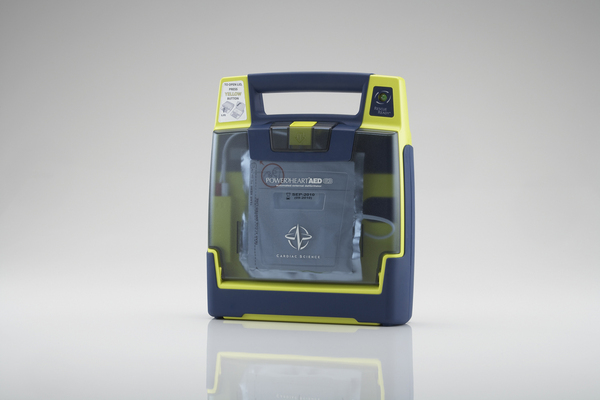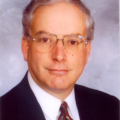In a Cal Ripkin Baseball game on April 13, eight-year-old Matthew Henry was hit in the chest by a pitch and left the batter's box on his way to first base. He collapsed after a few steps, reportedly the victim of commotio cordis ("agitation of the heart," in Latin).
According to a 2010 study in the New England Journal of Medicine (1) authored by Dr. Barry Marron, perhaps the leading expert on the condition in the world, commotio cordis is characterized by "[v]entricular fibrillation and sudden death triggered by a blunt, nonpenetrating, and often innocent-appearing unintentional blow to the chest. Victims typically do not suffer from heart disease or other pre-existing heart defect, and about 50% of commotio cordis events have been reported in young competitive athletes . . . participating in a variety of organized amateur sports - typically baseball, softball, ice hockey, football, or lacrosse - who receive a blow to the chest that is usually . . . delivered by a projectile used to play the game, such as a pitched, batted or thrown ball in baseball." [For more on commotio cordis, click here]
Fortunately for Matthew, parents in the stands included Dan and Susan Farren, off-duty paramedics who saved his life by quickly administering cardiopulmonary resuscitation (CPR) that kept his blood flowing for about five minutes until emergency paramedics arrived with an automated external defibrillator (AED), which was used to restore the boy's heart to its normal rhythm. Matthew was taken to Santa Rosa Memorial Hospital and later spent three days in Oakland Children's Hospital and Research Center, where he talked with his coach about his game statistics. He was reunited with his team the following week, though he must rest from sports for a few months before his parents can consider letting him resume playing ball.
"I Wouldn't Have Made It"
Knowledge of CPR, and the presence of an AED on the scene can sometimes also mean the difference between life and death for parents and other older fans who suffer a cardiac emergency as they watch youth league games. On April 24, 45-year-old Samantha Graham went into cardiac arrest in the stands at her second grader's Little League baseball game. Her heart was reportedly burdened by the prior day's particularly strenuous chemotherapy treatment for breast cancer.
As in Matthew Henry's case, an off-duty paramedic in the stands came to the rescue. Ray Antonopoulos, trained in CPR in the Coast Guard a little more than a decade ago, applied the technique for about 2-1/2 minutes before he was joined by another trained parent, Jeff Meisner, who had been watching his son play on an adjoining field. The two fathers worked together for a few more minutes until city emergency medical technicians arrived with a defibrillator. The EMTs' first attempt to restart Graham's heart failed, but the second succeeded.
Samantha Graham's son was at bat when his mother collapsed, and he got a hit without realizing the medical emergency nearby. The emergency room cardiologist, Graham said later, "made it clear that if Ray and Jeff had not been there, I wouldn't have made it."
"Far More Common Than Once Considered"
These two stories, and others like them, illustrate the adage that "a hero is an ordinary person who performs in an extraordinary situation." The parents who hurried to the aid of Matthew Henry and Samantha Graham had arrived at the ball fields expecting nothing more than to sit back and watch their children play. Thanks to special training that most parents and coaches do not have, they saved lives when the situations unexpectedly turned extraordinary.
Beyond the personal level, however, the Rohnert Park and West Newbury stories demonstrate the value of CPR training and having an AED on the scene, two subjects that Brooke de Lench, Lindsay Barton and other staff members have written about for years on MomsTEAM.com. (For a treasure trove of their instructive articles and videos and the helpful advice they provide, just do a word search on the website for "CPR" and "defibrillator" or visit the Cardiac Safety center under the Health and Safety Tab).
Cardiac emergencies at youth league events do not happen often, but they do happen. A study in the journal Pediatrics (2)reports that among players, "[s]udden death from relatively innocent chest blows (commotio cordis) has been reported with increasing frequency in youth sports. Although once thought to be a rare event, it is now apparent that these tragedies are underreported and probably far more common than once considered. . . ." Parents, grandparents and other adults in the stands face the same risks as other persons their age.
AEDs: a wise investment
MomsTEAM has long advocated for youth sports teams and leagues to have an automated external defibrillator, and a trained operator, at every practice and game, but the aspiration remains unfulfilled in many places. In both Rohnert Park and West Newbury, lives were saved by CPR-trained Good Samaritans who awaited the arrival of these life-saving machines within those first few critical minutes. From time to time, headlines remind us of tragic outcomes that defibrillators on the scene might have prevented.
In the wake of Matthew Henry's near tragedy, Rohnert Park-area baseball leagues reportedly will now purchase AEDs for their various locations. One league's safety officer had argued in vain for defibrillators for a year, but "[t]here was some trepidation. These are not cheap to buy."

The price tag (from $800 to $1600 each) somehow seems more manageable when one considers what would have happened had AEDs not been nearby for Matthew and Samantha. Parents nowadays spend thousands of dollars on personal coaches, summer camps, scouting services, pro-style uniforms, interstate travel, and similar outlays for their children's sports. Life-saving defibrillators do not appear an insurmountable financial burden, particularly when the cost is spread among all families' registration fees in the typical sports program, or when sponsors or other donors help defray the cost. A one-time outlay of few dollars per family seems a small price to pay for preparedness that might save a life.
Certification, instruction and vigilance
Training in CPR and defibrillators, and in first aid generally, should be a central part of a league's mandatory preseason certification-instruction sessions for coaches and other personnel. In cooperation with the Red Cross or local hospitals or sports medicine clinics, leagues should also make this training available to other parents and family members who wish to take it because, as USA Hockey puts it, "[y]ou can never have enough qualified hands in case of an emergency."
In recent years, however, I have talked with several volunteer coaches who have attended preseason certification-instruction sessions in a variety of sports. I get the sense that the agendas are sometimes heavy on Xs and Os and light on training that can prevent or treat injuries, and perhaps even save a life in an emergency. Priorities should be adjusted where necessary.
Preparedness should not end with preseason training sessions. The Rohnert Park and West Newbury stories shared a common denominator - trained off-duty EMTs just happened to be in the stands when someone's life depended on it. When seconds and minutes count, youth sports leagues should not leave expert emergency assistance to happenstance.
When I was president of a youth hockey association from 1990 to 2001, the board of directors appointed a Medical Committee before the first preseason practice session. The chair was a parent or other volunteer adult who was a physician, EMT, or other medical professional. At pre-season registration, the Medical Committee assembled a list of volunteer medically-trained parents, and then established a formal schedule to assure that at least one (with a well-stocked first aid kit to supplement what was available at the rink) attended each practice session and game. The schedule usually meant that parent volunteers would serve during their own children's practices and games, which they would normally attend anyway. Sometimes the lineup of trained volunteers also included volunteers who had no children in the association but volunteered to participate.
The first responsibility of youth league coaches and league administrators is to assure the safest possible conditions for children and their families. Safety begins before heroes must take action.
1. Maron B, Estes N. Commotio Cordis. New Eng J Med 2010:362:917.
2. Link M, Maron B. Reduced risk of sudden death from chest wall Blows (Commotio Cordis) With Safety Baseballs, Pediatrics, 2002;109:873-77
Other sources: Dan Guttenplan, West Newbury Woman Revived By Two Little League Parents, Daily News of Newburyport (Mass.), Apr. 29, 2013; Randy Rossman, Sonoma County Youth Sports Leagues Buying Defibrillators After Rohnert Park Boy's Collapse; Press Democrat (Santa Rosa, Calif.), Apr. 27, 2013; USA Hockey, A Responsible Sports Season Is a Safe Season, http://usahockey.com/RSWeekly050613.aspx (accessed May 6, 2013)]


















